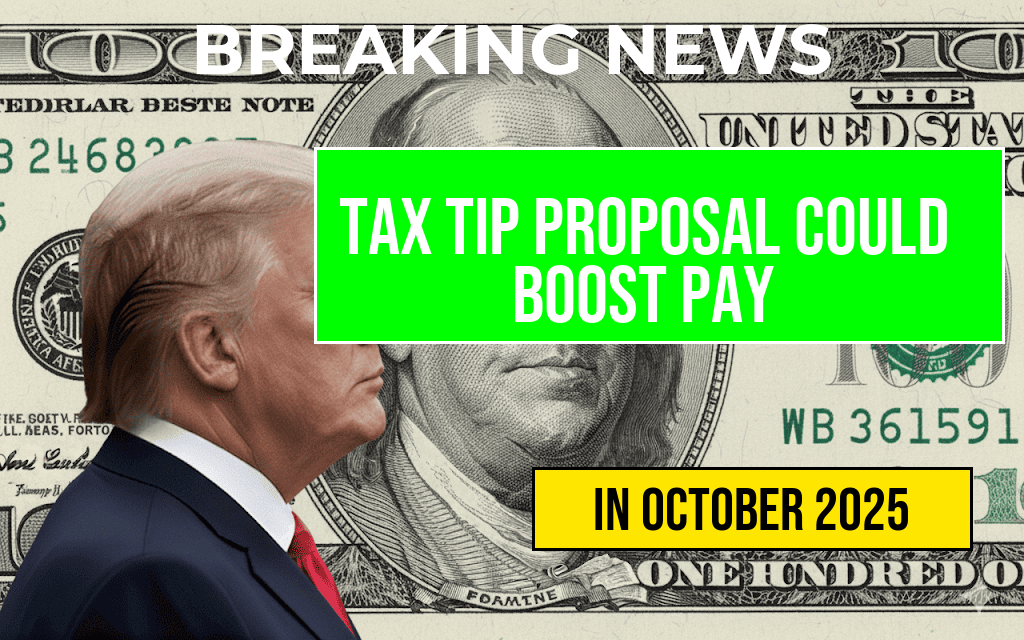Trump Signs $3.4 Trillion Mega-Bill with $4 Trillion Debt Increase, Promises No Tax on Tips
A sweeping legislative package totaling $3.4 trillion has been signed into law by former President Donald Trump, marking one of the most substantial federal spending initiatives in recent U.S. history. The bill, which aims to fund various government programs and infrastructure projects, is projected to add approximately $4 trillion to the national debt over the next decade. Amidst concerns over rising deficits, Trump emphasized that the legislation includes a specific provision promising no new taxes on tips, a move aimed at safeguarding service workers’ income. The bill’s passage signals a significant shift in fiscal policy priorities, blending expansive government spending with targeted protections for certain economic sectors. Critics warn that the debt increase could have long-term implications for the nation’s financial stability, while supporters argue the bill is necessary for economic growth and recovery.
Key Elements of the $3.4 Trillion Legislation
The bill encompasses a broad array of initiatives, from infrastructure upgrades to social programs, designed to bolster the economy and address longstanding issues. Some of its main components include:
- Infrastructure Investment: Allocates funding for roads, bridges, public transportation, and broadband expansion.
- Healthcare Funding: Increases support for Medicare and Medicaid, alongside measures to combat drug addiction.
- Education Programs: Provides grants for schools and higher education institutions, aiming to improve access and quality.
- Climate and Green Energy: Invests in renewable energy projects and environmental conservation efforts.
- Defense and National Security: Boosts military funding and enhances cybersecurity measures.
Fiscal Impact and Debt Projection
The legislation’s financial footprint is substantial. According to Congressional Budget Office (CBO) estimates, the bill will increase the federal debt by approximately $4 trillion over the next ten years, primarily driven by increased borrowing to fund the new initiatives. The debt increase raises concerns among fiscal conservatives who warn that sustained borrowing could lead to rising interest costs and reduced fiscal flexibility.
| Parameter | Estimate |
|---|---|
| Total Spending | $3.4 trillion |
| Debt Increase over 10 years | $4 trillion |
| Annual Deficit Impact (average) | $400 billion |
Tax Provisions and Protections for Service Workers
One of the bill’s notable features is the explicit promise from Trump to protect service industry workers from tax increases on tips. The legislation states that no new taxes will be levied specifically on gratuities received by waitstaff, bartenders, and other tipped employees. This provision aims to preserve income levels in sectors heavily reliant on tips, especially amid ongoing debates about tax fairness and wage support.
During the signing ceremony, Trump emphasized, “We are ensuring that hardworking Americans who earn their tips will not face new tax burdens. Their income should be protected as we invest in the future of our nation.” Such assurances are likely to resonate with service workers and industry advocates, who have expressed concern over potential tax hikes impacting their take-home pay.
Political Reactions and Future Outlook
The bill’s passage has elicited mixed reactions across the political spectrum. Supporters, including many Republicans, argue that the legislation is necessary to stimulate economic growth and modernize infrastructure, especially as the nation recovers from recent economic disruptions. They point to the targeted protections for service workers as a pragmatic move that balances fiscal responsibility with fairness.
Opponents, however, criticize the bill for its size and debt implications. Democratic leaders have raised alarms about the increased borrowing and questioned whether the spending aligns with long-term fiscal sustainability. Some analysts warn that such a significant expansion could exacerbate inflationary pressures and lead to higher interest rates in the future.
As the bill begins to implement its various programs, policymakers will closely monitor its economic effects and debt trajectory. The legislation’s impact on the national economy, public debt, and income distribution remains a subject of intense debate among economists and political observers.
Additional Resources
For more details on the legislative process and fiscal analysis, visit Wikipedia’s overview of the U.S. federal budget and Forbes’ coverage of fiscal policy.
Frequently Asked Questions
What is the total value of the mega-bill signed by Trump?
The mega-bill signed by Trump is valued at $3.4 trillion, making it one of the largest legislative packages in recent history.
How much will the national debt increase as a result of this bill?
The bill is expected to increase the national debt by approximately $4 trillion, reflecting significant government spending and financial commitments.
Does the bill include any provisions to tax tips?
No, Trump has promised that there will be no tax on tips as part of this legislation, addressing concerns from service industry workers.
What are the main areas of focus in the $3.4 trillion mega-bill?
The bill covers a wide range of initiatives, including infrastructure, healthcare, education, and economic recovery efforts, aimed at boosting the economy and supporting public services.
When was the bill signed into law?
Trump officially signed the bill into law shortly after its passage, marking a major legislative milestone with significant financial implications.










